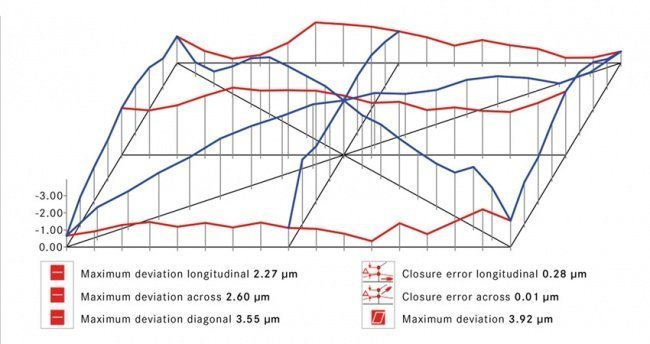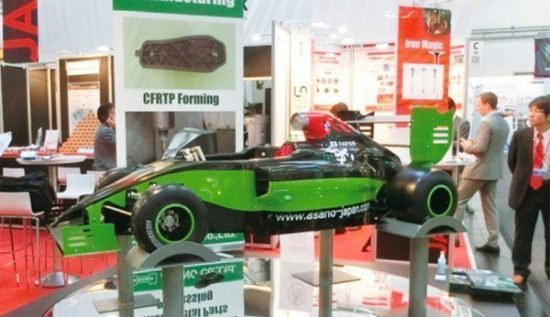How Can Portable CMMs Help Improve Machine Shop Workflow?
Innovations in the compact metrology space are changing the way machine shop inspection works for the better. By Bernard Chou, regional product line manager (portable), APAC at Hexagon Manufacturing Intelligence.
New hardware, advanced 3D measurement capabilities and integration with CAD and enterprise metrology software packages is opening a range of new opportunities for greater inspection productivity and manufacturing process optimisation.
Today’s portable device alternatives include portable measuring arms, laser trackers and scanning systems, making it convenient to move a level of quality assurance directly onto the shop floor.
Depending on the system, it’s possible to provide accurate measurements within a range of 15-100 microns. While still not yet at the level of the high-precision work done by stationary CMMs in the lab, this degree of accuracy is entirely suitable for many of the measurement tasks typically found on the shop floor.
Speed Of Production
On the shop floor, uptime is what matters most, and any tool that best maximises metal cutting time rules the day. Using portable devices for making in-process checks or first-piece inspections (if accuracy permits) can be the difference when it comes to maximising uptime, as no effort is wasted getting parts to a remote measurement location and then waiting for inspection results to come back.
The key to getting fast measurement results from a portable device at or near a machine tool is preparation. For the latest generation of arm-type instruments, this means simply knowing what features to measure, selecting them using a graphic user interface and following the prompts.
Users can even perform complex evaluations on the shop floor using portable arms equipped with the same software found on stationary CMMs. This type of software uses a CAD model to generate efficient probe paths and allows for the generation of as much as 90 percent of a measurement programme offline before even taking the portable measurement device to the part.
What’s more, if a first-piece CMM inspection programme already exists for measuring a part, users can import all or part of the programme into the portable software package with minimal changes, eliminating most of the required programming and saving time. All that needs to be done at this point is taking the portable device to the part, orienting the part to the device and performing the required measurements.
In a guided inspection routine, the user interface that uses the CAD model as a reference will show the operator where to probe the part and then immediately display the measurement results. Colour-coding (green/red) on the CAD model view of the part will indicate where it is in or out of tolerance.
This kind of instant feedback is a win-win for the manufacturing and quality departments; portable users on the shop floor obtain measurement results immediately, and they do so without tying up the CMMs in the quality laboratory, which often has a heavy workload on other tasks.
Fitting Conclusions
Even when a part on a machine has a problem, it is not always necessary to scrap it. Those familiar with CMMs already know how to use their software’s best-fit capabilities to answer a wide range of questions about a part:
- The casting is malformed, but is there enough material available to make a good part from it anyway?
- Is there enough material available on this bad part to re-machine it and make a good one?
- By reorienting this rejected part in three dimensions within the measurement programme, can I match up the critical features more closely to the CAD model and avoid rejecting it?
Answering these questions and others like them presents opportunities for salvaging valuable parts with many resources and hours of work already invested in them.
Additionally, moving the answers from the quality lab to the shop floor is a sure-fire route to significant efficiency savings, whether that be from the reduced time spent assessing errant parts, or the increased number of parts repurposed by eliminating the guesswork involved in deciding which parts are worth fully assessing.
Process Problem Solving
Good manufacturing people are ingenious when it comes to devising on-the-spot solutions to dimensional problems that materialise unexpectedly. These impromptu adaptations may include the use of shims, special fixtures and ad hoc machine tool offsets, allowing the machinist to ship good parts out the door without having to double back and find the root cause of and correct every problem immediately.
Portable measurement systems are an excellent aid in making such improvisations, allowing experienced machinists to work faster and with greater accuracy as they correct mistakes on the fly.
And once the immediate problem is solved, the portable measurement system becomes a vital tool in tracing the out-of-spec condition back through the various manufacturing operations to identify and fix the root cause of the problem. The operator will be able to follow this problem-solving process using defined measurement knowledge rather than guesswork, ultimately accelerating the entire process of unwinding the problem.
From Basic To Advanced
Usability is always important for portable measuring devices, and while easy to understand and use, they actually support a broad range of user capabilities.
For novice operators, a simple, intuitive user interface is presented for checking basic characteristics of parts or using pre-programmed measurement routines written by CMM experts to check more complicated geometry. This makes it a quick and easy process for operators to learn to perform in-process checks or do pass/fail inspections of their own parts.
Users at the more sophisticated end of the scale most likely have a working knowledge of CAD and CAM. They will have little trouble using advanced portable devices and software to expedite setups or troubleshoot manufacturing process problems.
And quality assurance staff will be able to deploy portable measurement approaches to get measurement results faster and closer to the process while eliminating bottlenecks at the CMM in the laboratory, allowing product development work to avoid continuous interruptions for the sake of keeping manufacturing on schedule.
This flexibility in allowing users at different levels to handle tasks of varying complexity with the same tools has obvious benefits. In terms of cost-effectiveness, purchasing and training on a single tool present a clear opportunity to avoid unnecessary spending.
The Road To Efficiency Is Portable
The field of industrial metrology has now reached the point where portable devices with CAD-based measurement software are no longer speciality items, but mainstream tools that can be used to detect the causes of dimensional problems when and where they occur.
By measuring at or near the machine, measurement-related time-wasters can be minimised and measurement backlogs at stationary CMM sites can be cut significantly, both of which are key factors in improving new programme delivery cycles.
CHECK OUT THESE OTHER ARTICLES
● Real-Time Shop Floor Integration, Simplified
● Tackling Shop Floor Inspection Challenges
● Hexagon Launches PC-DMIS 2019 R2
● A New World of Laser Tracker Scanning
● Wenzel: Towards a Closed Loop Measurement Environment
● New High-Definition Feature Scanner For Automated Inspection
● Hwacheon on VMCs vs. HMCs
● Achieving Perfect Gaps And Joints
● Walter: Tool Life App
● ASEAN Region In Focus Of German Machine Tool Industry
WANT MORE INSIDER NEWS? SUBSCRIBE TO OUR DIGITAL MAGAZINE NOW!
FOLLOW US ON: LinkedIn, Facebook, Twitter














